HTC started making a name for itself in the smartphone market several years ago with Windows Mobile phones. It is successfully continuing the tradition to this very day, but it gained a lot more mainstream popularity in Europe and America for its Android phones. I can remember HTC Android 1.5 Cupcake devices, but it all really took off with the HTC Dream, aka T mobile G1 and later with the HTC Hero. The Hero design is slowly coming back with new HTC One V, but for now we will focus on the 4.3-inch One S, the first smartphone powered by Qualcomm’s 28nm S4 8260A processor. 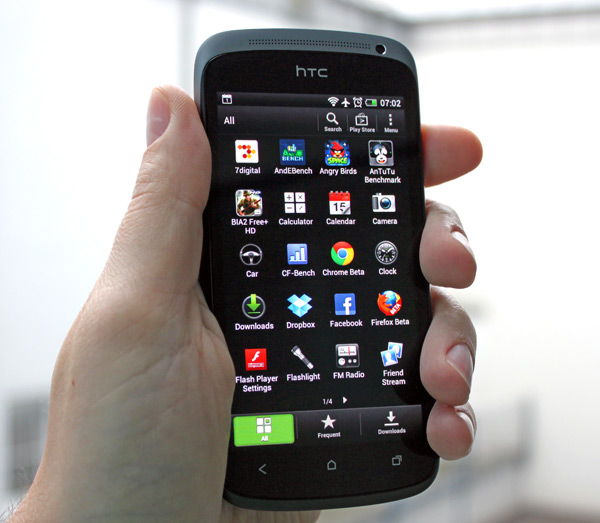
Aside from the new processor, the One S also boasts Ice Cream Sandwich 4.0.3 with HTC Sense 4.0. Imagine, an Ice Cream Sandwich phone that’s not a Nexus. We apologize for the sarcasm, but it really took way too long to see phones shipping with Ice Cream Sandwich, and kudos to the house of HTC. Some vendors are still churning out new models on Gingerbread. (We are looking at you Sony. Ed) Despite the state of the art processor, hi-res screen and aluminium body, the One S is not HTC’s flagship device. That distinction is reserved for the HTC One X, which comes in at about €100 more. It features a 720p screen and Tegra 3 processor. The X stands for eXcellence, HTC claims, but the S can stand for a superlative of its own. 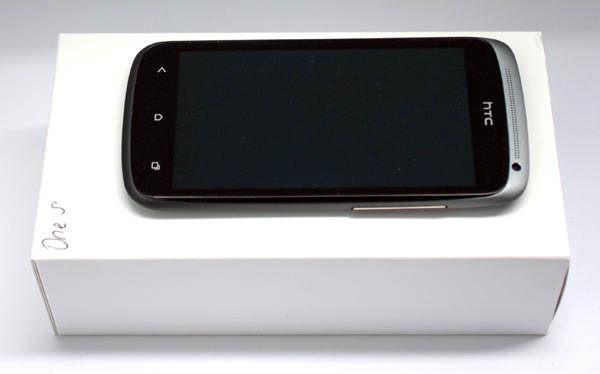
The HTC One S is the first phone to ship with the new Qualcomm Krait core, a dual core Snapdragon S4 8260A to be exact. It is clocked at 1.5GHz, comes with 1MB L2 cache, supports dual-channel 500MHz DDR2 memory and it is coupled with Adreno 225 graphics. US readers will be disappointed to know that HTC One S doesn’t have LTE support. Let’s get into some numbers and further specs. The phone measures 130.9 x 65 x 7.8 mm, or 5.15 x 2.16 x 0.3 inches and it weighs 119.5 grams (0.26 pounds). It features a 4.3-inch Super AMOLED screen and the resolution stands at 540 x 960. The phone has 1GB RAM and 16GB integrated storage, but no microSD card for expansion. Instead HTC offers 25GB of Dropbox storage free of charge for two years. 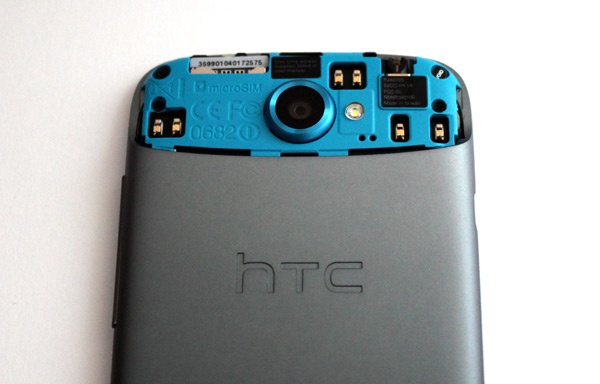
The box contains a charger that comes with detachable USB cable, manual and headset. Like most new phones, the One S features a micro-SIM slot and in order to access it you need to take off the top lid that covers the camera, a plastic flap and insert it. It is not what we would call practical, but then again most users will not change their SIM cards at all. Once you are done with the SIM card, the One S powers up in no time and you are good to go.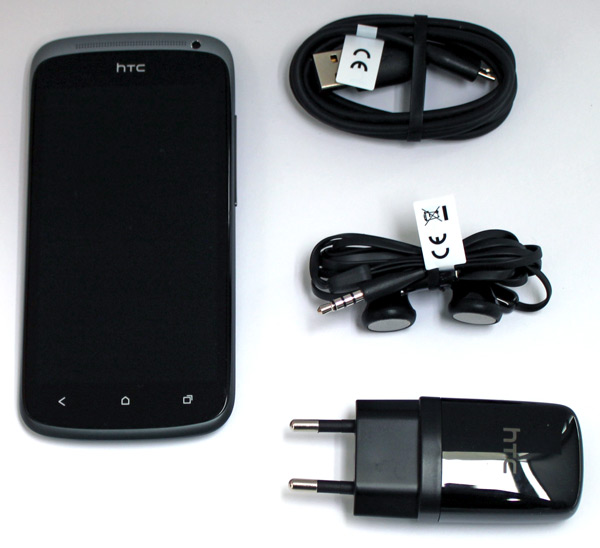
HTC One S is probably the thinnest phone with a decent sized screen we’ve seen so far. It measures just 7.8mm (0.3-inch) and it features a beautiful aluminium body finished using micro arc oxidation. The process basically bombs an aluminium plate with 10000 volts of electricity creating a micro reaction that creates a ceramic-like surface on the phone. It should be three times stronger than stainless steel. We wonder if HTC will start making cutlery using the same process. I could do with a few stylish steak knives.
On the whole we can say that it feels great in the hand but if you leave it standing on the table for an hour or two, it will feel metal cold. We are not sure if this is a good or bad thing, but at least nobody will say it feels plasticky. The finish feels great, offering a lot of grip, and it feels very robust for such a thin device. If you want to see how it’s made, you can take a look at this
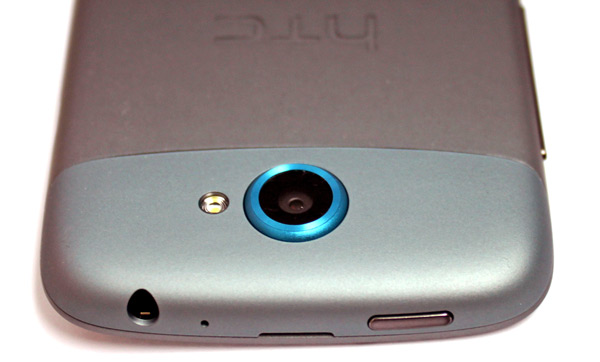
In terms of features, you could hardly be blamed for mistaking the One S for a flagship device. It features a speedy 8-megapixel camera with F2.0 lens and autofocus that can take snap up to 99 photos continuously, but we will get to that later. The camera features an image sense chip sensor that makes delivers outstanding image quality, for a phone at least. The camera can make the iPhone 4S run for its money and it also supports 1080p video. It also allows you to snap still photos while shooting 1080p video. This is really nice feature that we are starting to see on high-end phones.
Let’s not forget 802.11a/b/n support, Bluetooth 4.0, DLNA wireless streaming for audio and video and micro USB 2.0 that can act as HDMI via a special cable. Of course the phone comes with 3.5mm stereo audio jack as well as a speaker on the back side. The phone supports Beats Audio, but it is really nothing more than a gimmick as far as serious audiophiles are concerned. The phone features a 1650mAh battery that delivers decent battery life. The battery is not user-replaceable.
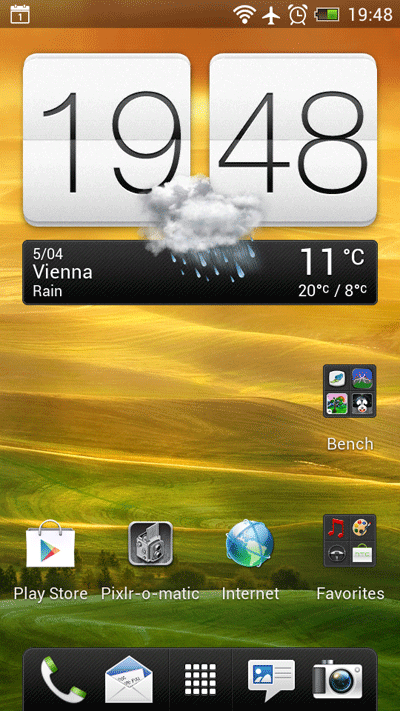
We are happy to see Android 4.0.3 out of the box and Sense 4.0 is a refreshing distinction from Galaxy Nexus vanilla Android 4.0 interface. Of course, it will take some time to get used to it, but going form Gingerbread 2.3.x to Android 4.0 requires some time to adjust. Right off the bat we have to say that we like Sense 4.0. Like previous versions, it offers practical and easy to use shortcuts, for example you can unlock your phone directly to dialer, main, messages or camera. The part that sucks is that if you have a face recognition or pattern or pin turned on, after unlock you need to deal with that. Face unlock suffers from low light but usually works nice and quick in normal lighting conditions. Still, face unlock is more or less a gimmick and most users will still stick to the traditional swipe-to-unlock approach.
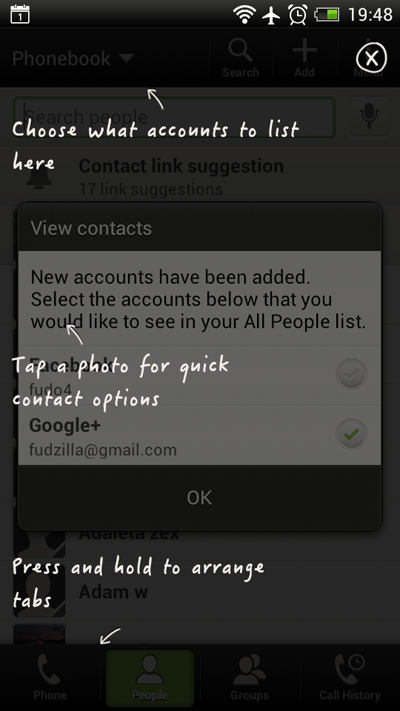
Sense relies on home button, back button and task button that you have below your screen. Killing a task is just a swipe away. You can modify the task bar that comes with dialer, mail, sms camera and all app in our case but you can also add folders. We missed the browser in default task line, but of course you can place the shortcut on your own. Customization is not a problem.
It is equally easy to place widgets, you press and hold an empty space on one of your screens and chose a widget or an app. Really nice. You can integrate multiple mail accounts, Facebook, Twitter, Dropbox, SkyDrive and a few other applications and you can set all this up when setting the phone up. There is a lot to say about Sense 4.0, and it does have its foibles, but generally we liked it better than vanilla Android 4.0 as it just feels better and looks great, but this is a matter of personal taste.
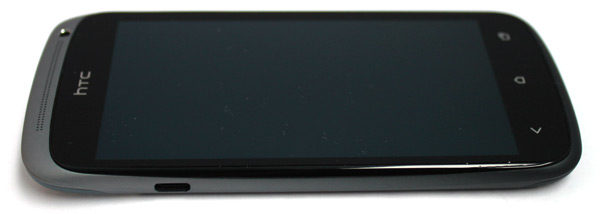
The power button on the top right, audio jack top left, the left side of the phone has micro USB 2.0, right hand side facing forward has volume up and down keys and the down side comes with a microphone hole.
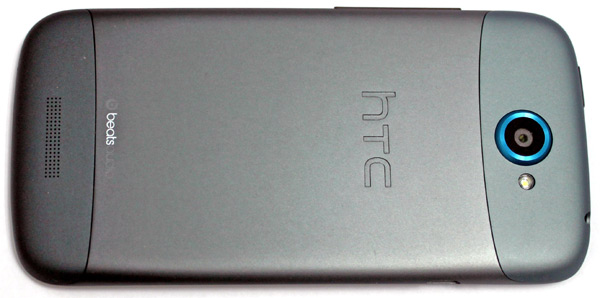
The back side of the phone is dominated by the camera with LED flash, Beats Audio logo and speaker.
There is no microSD slot and you cannot access the battery, either.
Unlike its bigger brother, the One S uses a Super AMOLED display. The thin screen allowed HTC designers to shave off an extra millimeter off the girth, but it also has one drawback. It uses a PenTile matrix arrangement, which results in some graininess, especially in high-contrast images. It basically creates an illusion of a lower-res screen and the difference is very noticeable once you place it next to the HTC One X, with a gorgeous SLCD 720p screen.
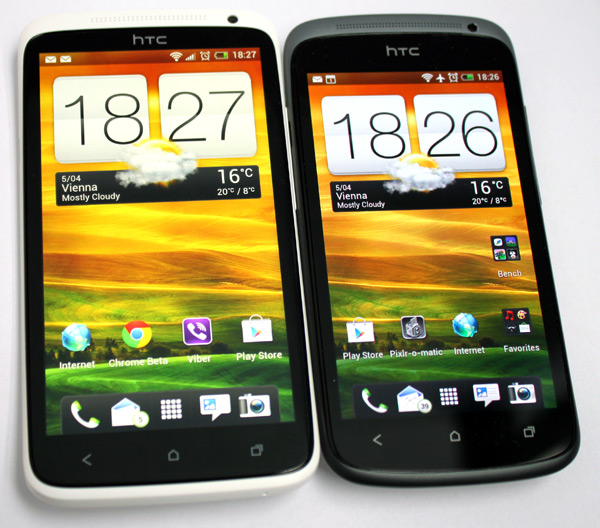
Despite this the screen looks very good, especially if you don’t have an HTC One X next to it, but it definitely isn’t the best possible solution.
The phone feels incredibly fast and the UI is silky smooth. Every single operation is blazing fast, but installation was especially impressive for us. On Wi-Fi it takes a few seconds to download a few MB application and installation usually takes even less than that. This has to do something with quite fast integrated storage that runs 23.6MB/s write and 45.7 MB/s read, according to Antutu. This was the fastest phone experience we had until we got HTC One X in hands that did some things slightly faster, but has a noticeably better screen. We will tell you more about the One X in a couple of days.

Both the stock Android browser and Chrome beta ran very fast and browsing is a joy. The phone is significantly faster than an LG Optimus 2X and it is neck and neck with the Galaxy Nexus, a phone that so far delivered the best Android 4.0 experience. It is not that you have plenty to choose from as Sony Experia S still runs Gingerbread.
Getting 25GB of free Dropbox storage is a great move on HTC’s part. Dropbox is a very clever service and with good upload speeds it takes mere seconds to upload a few MB files from your PC or phone to Dropbox and then a few more from Dropbox to your phone. The new feature to automatically upload photos to Dropbox is great, as it gets you eye-Fi like feature as you can see your phone in matter of seconds on your PC or notebook. Really cool stuff that makes transfer a bit easier and greatly reduces the need for USB sticks. With a 25GB Dropbox, capability to connect to 25GB of Microsoft Skydrive, the integrated 16GB of storage doesn’t sound too small.
Most phone makers are turning away from microSD storage, especially in high end devices. There is a very good reason for this, and it has nothing to do with aesthetic issues or bulk. Internal storage tends to be significantly faster than microSD and buying a speedy high-end phone only to burden it with slow external storage and undermine the user experience sort of defeats the point of getting a high-end phone to begin with.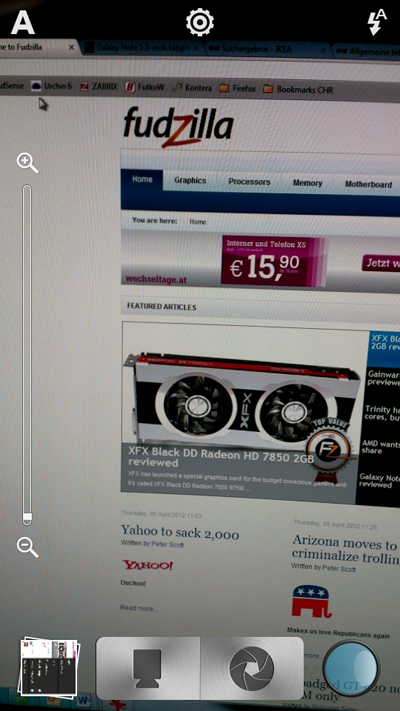
The camera is great. Like we said, it is an 8-megapixel unit capable of 1080p video. It can take 99 photos in burst mode, save them all or an algorithm can chose what it thinks its best one for you. Auto focus is quick and even in low light we got quite decent results. In very low light and no flash, you can get a nice picture, but obviously it will be grainy due high ISO and small sensor. It takes 0.7 seconds to power up and shoot, and the photos usually turn out really sharp, especially in daylight. Flash photos are acceptable but it’s better to take a few just to be sure that one of them will be decent. This is still a phone but takes photos good enough so you can forget about spending a few hundred on a point and shoot camera. Of course, point and shoot cameras are still way ahead of phones, phones are slowly getting to the point when they can truly replace cheap cameras.
Click for a full size sample
We will follow up with some videos and pictures for you just to prove the point. The camera startup is insanely quick, it takes photos and moves to a new one in no time. This is one of the best phone cameras that I’ve seen and it outperforms almost all phones on the market today. The iPhone 4S cannot take video and photos at the same time, the Sony Experia S is a tad slower, although it does feature a massive 12-megapixel sensor and dedicated shutter button.
Sound quality is decent and the speaker can play some nice music but it’s nothing spectacular. Beats Audio feels like a gimmick but it delivers good sound, no complaint there but it’s nothing that we haven’t heard or seen before. It will play all your music on speaker or headset just fine, nothing more to add here. HTC bundles a pair of standard headphones with the One S and they are nothing to write home about. Beats Audio tends to boost bass levels a bit, but audiophiles will be better off with an after-market unit. This is true of all smartphones today and we believe phone makers should really start paying a bit more attention in this department, especially when it comes to high-end devices.
We ran a lot of benchmarks to try to see how the new Qualcomm S4 8260A in 28nm with Adreno 225 graphics performs. The bottom line is that it performs great but One X, powered by a quad-core Tegra 3 chipset, scores a bit more in multi-threaded tests. 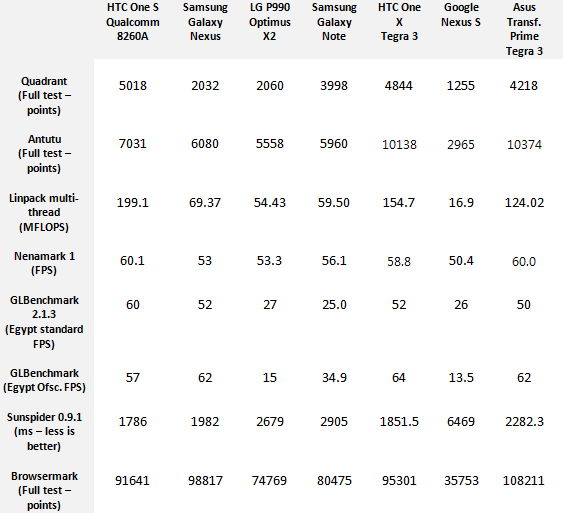
HTC One S Qualcomm 8260A wins in Quadrant, Linpack and Sunspider, compared to the 4-plus-1-core Tegra 3. It also scores better numbers in Nenamark 1 and GLbench Egypt standard test but since its running at 540 x 960 vs. 1280x720 at HTC One X, we are talking about apples and oranges in some tests. Tegra 3 wins this test in off-screen rendering when they compare the same image size in Egypt Off screen test. HTC One S is the fastest phone in Sun Spider test and it turns out that both OMAP 4430 from Texas instruments and Qualcomm with S4 8260A can score better in this test, lower is better of course. Linpack is a relatively unreliable test as 10 runs will result in 10 varying scores, but we ran 10 on each device and took the highest number. The One S wins this round. Browsermak scores better on Tegra 3 HTC One X as it clearly get use to all cores.
Now back to all multi tread aware tests. In Antutu, CF Bench and AndE bench more cores is clearly better. 
Overall, HTC One S is one of the fastest phones around and we almost dare to say that it’s the fastest and thinnest 4.3-inch phone in the world.
Conclusion
HTC’s One S is the thinnest, fastest high-end phone we’ve seen to date and the new aluminum-turned-ceramic material feels great.
One can argue that the phone looks a bit bland, it sticks with HTC’s traditional design and it will not turn heads, but this is a matter of taste. The camera is the best we’ve seen in this screen size and the phone performed admirable in all tasks and benchmarks, sometimes even outpacing the quad core Tegra 3. Some people will find HTC’s One X a bit too large and this is exactly the target group for the HTC One S. It’s a great phone, and although it does not have the best screen out there, it makes up with a very good processor, excellent camera and unparalleled build quality.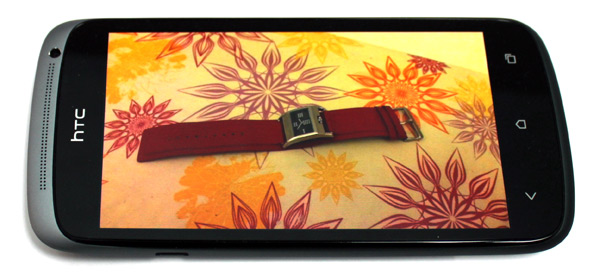
It feels great in your hand, it’s comfortable to use, and generally it is a great phone, one of the best we’ve seen. Downsides include limited storage, but HTC aims to make up for it with 25GB of Dropbox storage. It would be nice if HTC worked out a way to use volume buttons as a camera shutter button.
HTC really made a great comeback after a rocky year, and it is entering 2012 with a very nice lineup. The €450 price tag sounds a bit too steep, especially knowing that €100 more you can get you a One X, but once again you either want 4.3 or 4.7-inch screens, it’s hard to want both formats. The competition also offers a few alternatives. The Galaxy Nexus is now available for €399 or less and you can also pick up an Xperia S for about €430 and both offer pretty good value for money, although they can’t match the One S in terms of performance or build quality.
Overall it is a top notch phone and we can easily recommend it.




